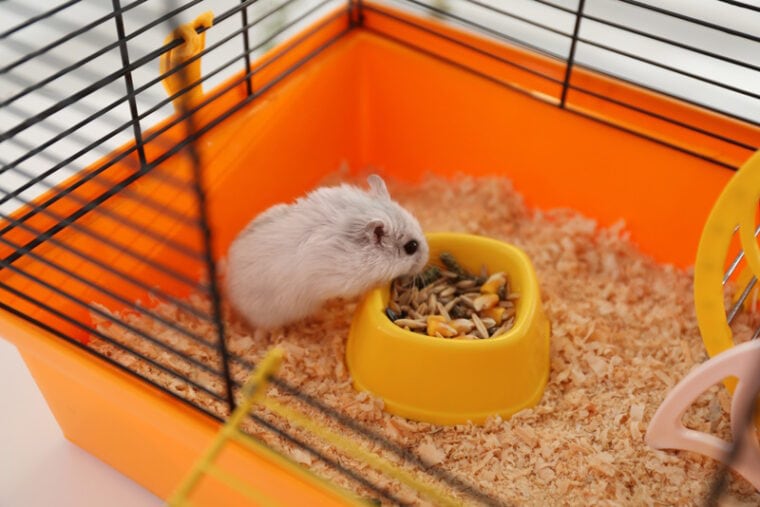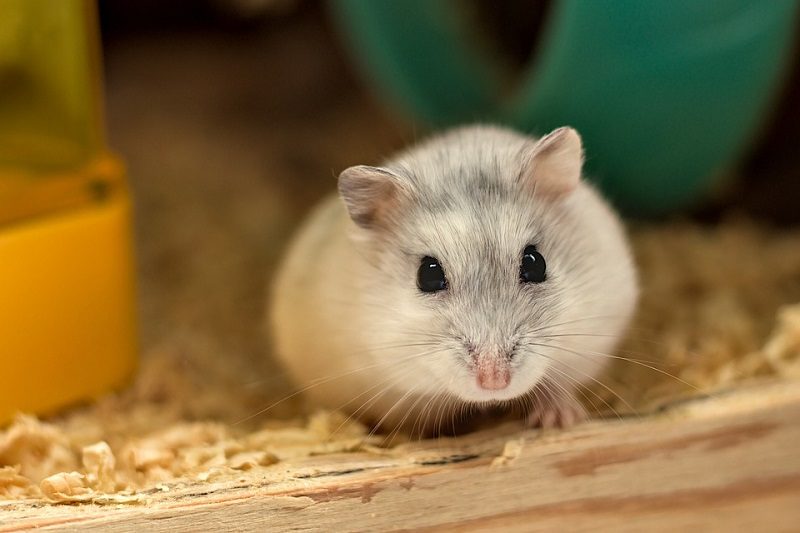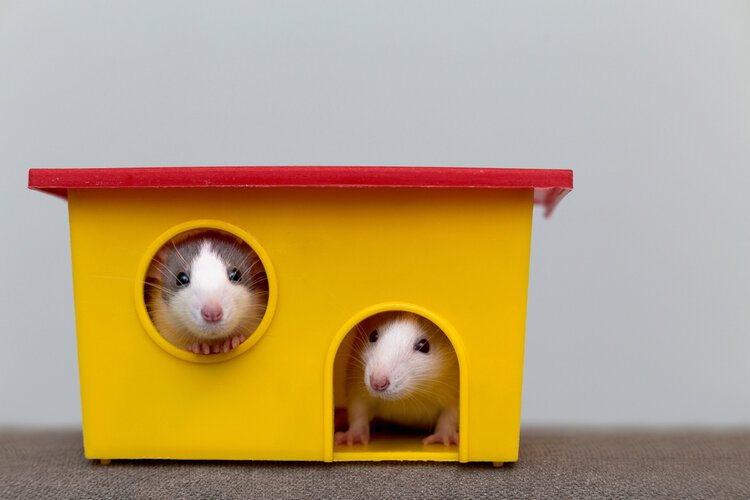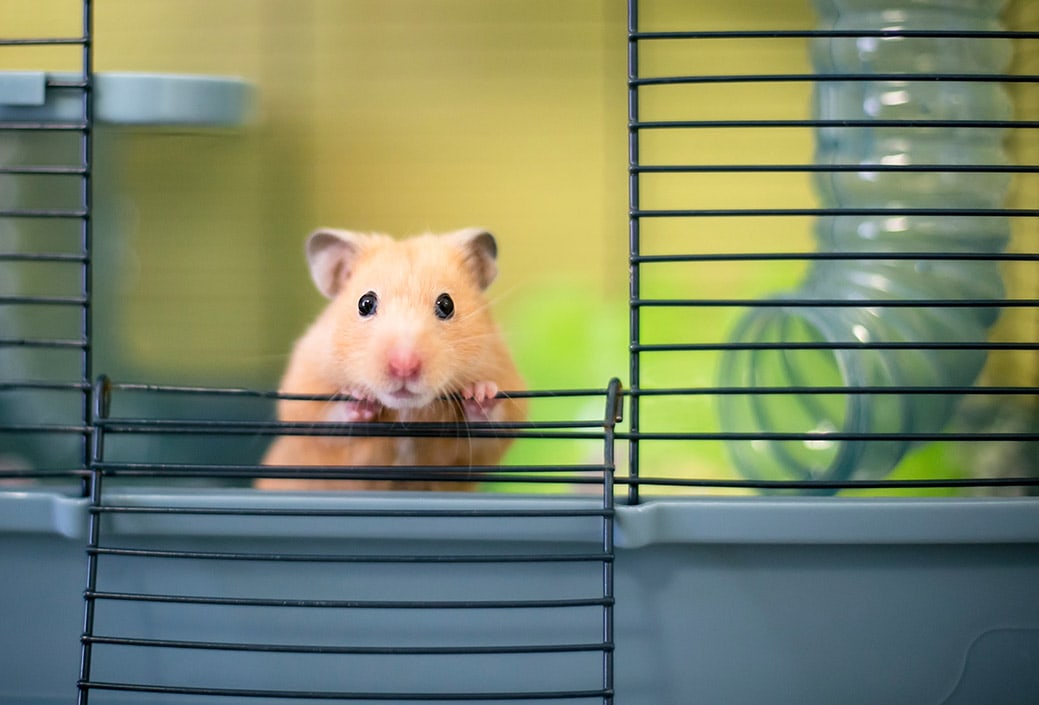
Throwing up is not a pleasant experience for anyone, particularly because the sign indicates that something is wrong. If you’re a dog or cat owner, it can be especially scary when your pet vomits. But if you’re a hamster owner, you might have never seen your pet throw up and are wondering if they even can.
Hamsters are physically incapable of throwing up, so if it looks like your hammy is vomiting, they are likely just emptying their cheek pouches.
If you would like to learn more about why hamsters don’t vomit and how you can tell when they’re sick, read on!
What Prevents Hamsters From Throwing Up?
It’s not only hamsters that can’t vomit—it’s the case for nearly all rodents. A 2013 study1 examined three species from the three major groups of mammals in the Rodentia family:
The researchers used chemicals that could cause vomiting, but the rodents in the study did not gag or vomit. The reasons for this inability to throw up are physical and neurological.
It was discovered that rodents have fewer muscles in the diaphragm which sits underneath the lungs. Additionally, the stomach is not designed to move contents upward effectively. The researchers also found less nerve, shoulder, mouth, and throat activity, which are all normally linked with throwing up.
This all means that both the bodies and brains of rodents make it physically impossible for them to vomit.

Why Can’t Rodents Vomit?
No one knows exactly why rodents are designed not to vomit, but it’s believed that the ability to vomit was replaced with different defense mechanisms.
For example, many rodents eat clay when sick. A 2009 study showed that sick rats that ate clay actually had a better recovery as they ate more and lost less weight.
Why Does Your Hamster Sometimes Look Like They Are Vomiting?
If you’re new to hamster ownership, it might be a little disconcerting to see what looks like piles of vomit come out of their mouths.
But this is just your hammy pushing stored food out of their cheek pouches. The name “hamster” comes from the German word, “hamstern,” which translates to “hoard,” and this is exactly what hamsters do.
Their elastic cheek pouches stretch to store large amounts of food. So, hamsters stuff them full of food to be transported to their abode where they can eat their food in safety.
Domestic hamsters haven’t lost this instinct even though it isn’t technically necessary. You’ll notice your hamster stuffing their cheeks full of the food that you’ve provided, only to carry it around for a bit and then push it all out in a different location in their habitat.
It does look like they are throwing up sometimes, but it’s perfectly natural behavior.

What Should You Not Feed Your Hamster?
While hamsters are typically good at figuring out what they should and shouldn’t eat, you should still know what you shouldn’t feed your pet. Since they can’t throw something up that might make them unwell, you must ensure they don’t have access to anything harmful.
Beyond these, there are a few foods that are fine for hamsters in small amounts occasionally, but must prepared in a specific way:
What Can Make Hamsters Choke?
Keep your hamster safe by moving potential choking hazards out of reach. For example, certain types of bedding can cause choking. Cotton is one of the worst culprits because it can get stuck in their teeth, is difficult to chew and swallow, and is known to be deadly for hamsters. Avoid bedding floss or anything else made with cotton. Electrical cords are double the danger—there’s the risk of electrocution and the possibility of choking.
Before you let your hamster out to explore, you’ll need to hamster-proof the area. Move all cords out of your hamster’s reach, as well as anything small, such as pellets, toys, marbles, or whatever else they could potentially swallow.

How Can You Tell If Your Hamster Is Sick?
Your hamster will display several signs when they have ingested something that they shouldn’t have.
If your hamster exhibits any of these signs, you must bring them to your veterinarian or closest emergency animal hospital. Once a hamster shows signs of distress, they can quickly deteriorate.
Conclusion
Since hamsters are incapable of throwing up, you’ll need to keep anything that they can choke on or that is toxic for them out of reach. You might also be interested to know that hamsters (and all rodents) cannot burp, but they do fart!
You should always pay attention to your hamster and their behavior, particularly if they aren’t acting like their usual selves. Knowing that they can’t vomit makes feeding them the right food even more important, so you can ensure to keep your hammy healthy and safe.
Featured Image Credit: New Africa, Shutterstock








